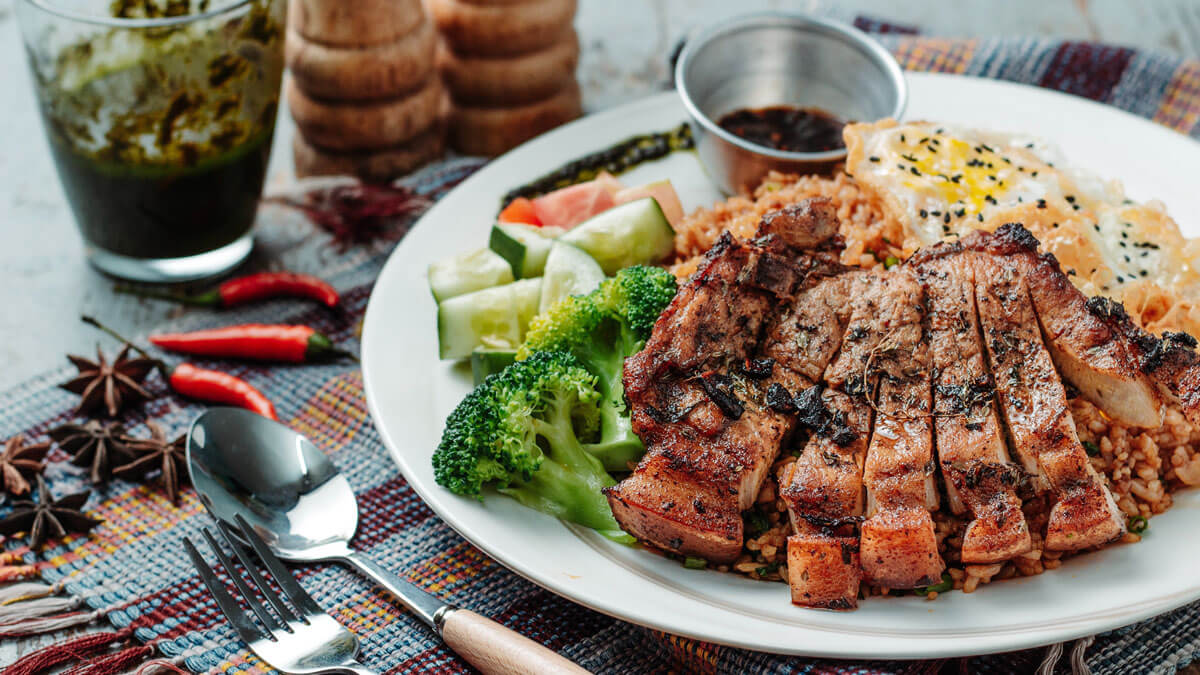Why Marijuana can be Helpful in the Treatment of IBD
Written By QuickMedCards. Reviewed by Dr. Shatha Atiya, PsyD. Updated June 13, 2025
IBD, short for inflammatory bowel disease, is a group of diseases that affect the gastrointestinal tract. They include Crohn’s disease and ulcerative colitis.
Unfortunately, there’s no known cure for IBD. That being said, cannabis has emerged as a complementary or alternative treatment to treat the bothersome symptoms of IBD.
For instance, cannabis may help reduce IBD symptoms such as chronic pain, nausea and vomiting, intestinal inflammation, and bowel motility among others.
This is good news for patients who suffer from these conditions since they won’t need to take a cocktail of drugs to treat these symptoms individually.
Going further, let’s take a look at what the experts say about cannabis treatment for IBD. Continue reading to learn more about results from preclinical trials, and the position of the Crohn’s & Colitis Foundation on marijuana and IBD.

Looking for a Medical Marijuana Doctor?
Contents
- Medical marijuana to treat inflammatory bowel disease (IBD)
- Symptoms of IBD cannabis may reduce
- Side effects of marijuana IBD patients may experience
- Studies supporting marijuana use for IBD
- Position of the Crohn’s & Colitis Foundation on marijuana and IBD
- Speak to a medical marijuana doctor
- Forms of medical marijuana for IBD patients
- Best strains for IBD
- What is IBD?
- Causes of IBD
- Current treatment methods for IBD
- Marijuana vs conventional IBD medication
- Conclusion
- Key takeaways
Medical Marijuana to Treat Inflammatory Bowel Disease (IBD)
Michigan Medicine’s assistant professor, Jami Kinnucan, M.D., a gastroenterologist, suggests that cannabis has several gastrointestinal effects that may positively impact patients with IBD.
She adds that cannabis may play a role in the relaxation of the esophageal sphincter, reduction of visceral pain, decrease in gastric motility secretions, as well as bowel motility.
So, how is cannabis capable of alleviating these symptoms of IBD?
The answer lies in the interaction of cannabis with the endocannabinoid system.
The endocannabinoid system (ECS) is a system responsible for regulating and balancing many processes in the body.
Similarly, studies have linked the ECS to visceral pain perception, nausea and vomiting, gastrointestinal motility, and intestinal inflammation.
Enter cannabis – whose influence on the ECS brings about both therapeutic and psychotropic effects.
We will take a closer look at how the cannabinoids in cannabis interact with the ECS to ease the symptoms of IBD.
The endocannabinoid system
Some of the many regulatory and balancing processes of the ECS include:
- Communication between cells
- Immune response
- Appetite and metabolism
- Memory
- Secretion of hormones
Additionally, the ECS also influences the food intake centers of the central nervous system and gastrointestinal activity.
Given the role the ECS plays in gastrointestinal activity, it’s no surprise that research suggests alterations in the system may influence the course of inflammatory bowel disease (IBD), including illnesses such as Crohn’s disease and ulcerative colitis.
Cannabis contains around 500 different chemicals. The most well-known are two cannabinoids called cannabidiol (CBD) and delta-9-tetrahydrocannabinol (THC).
CBD has anti-inflammatory properties, whose therapeutic benefits involve reducing inflammation, treating insomnia, sleep apnea, spasticity, and pain.
The second is THC, notable for its psychoactive effects (causing the high). But, it’s also responsible for reducing nausea, chronic pain, and increased appetite.
Given the properties of these two cannabinoids, we can picture what cannabis can do for patients suffering from inflammatory bowel disease.
Symptoms of IBD Cannabis may Reduce
Cannabis works to relieve the following symptoms of IBD:
- Abdominal pain
- Joint pain
- Cramping
- Diarrhea
- Poor appetite
- Weight loss
- Nausea
- Fatigue
Besides these relieving effects, patients report that the most compelling component of cannabis for IBD patients is its ability to improve the quality of their lives.
Side Effects of Marijuana IBD Patients May Experience
IBD patients using medical marijuana may experience some side effects associated with cannabis use. For example:
- Short term memory loss
- Diminished motor skills
- A decline in reaction times
- Fatigue (although some strains reduce fatigue)
- Anxiety, panic, or paranoia (lower doses may reduce anxiety)
- Increased heart rate
- High or low blood pressure
- Dry mouth
- Depression (in some cases, marijuana helps patients recover from depression)
- Risk of cannabis dependence
Additionally, certain groups are advised against using cannabis. For example, pregnant women, children, young adults under 25, and people with a family history of mental illness.
Studies Supporting Marijuana Use for IBD
Over the years, scientists have sought to understand whether marijuana may be beneficial for IBD patients. In truth, due to the status of the drug as a schedule I substance, not enough has been done to conclude whether marijuana should be used in IBD therapy or not.
Still, preliminary studies have revealed how medical marijuana may be useful in the treatment of both Crohn’s disease and ulcerative colitis.
The Pioneers of Cannabis & IBD Research
In 2011 Naftali and colleagues pioneered research into cannabis and IBD when they conducted the first study examining 30 patients’ with Crohn’s disease response to cannabis. All thirty patients reported an improvement in their general well-being after cannabis use. 21 patients reported notable improvement. Additionally, only 2 patients required surgical intervention within 3 years of cannabis use.
According to Naftali and co. this indicated a significant improvement in the normal operative rate in patients with Crohn’s disease.
Moreover, abnormal bowel movement was reduced and a majority of patients using corticosteroids ceased their use. Specifically, 22 out of 26 patients stopped using corticosteroids completely. Implying that marijuana may lead to less use of corticosteroids, besides other prescription medications.
Naftali and co. continued setting the pace for marijuana and IBD research when they conducted the first prospective, randomized, double-blind placebo-controlled trial involving patients who were resistant to various conventional treatments. For example, corticosteroids, immunomodulators, aminosalicylates, and biological agents.
At the end of the trial period, none of the patients were required to use corticosteroids. Additionally, two patients who used opiates to ease their chronic pain also stopped opiate use entirely during the study.
Naftali and colleagues reported that THC-rich cannabis produced significant clinical, corticosteroid-free benefits in patients with active Crohn’s disease. Yet, they stressed the importance of further trials in a larger sample size.
Improved quality of life in patients with IBD
Another trial published in 2012 by Lahat et al. involved IBD patients who were under a conventional IBD medication regimen. Marijuana cigarettes were handed to the participants and they were asked to smoke a cigarette every time they experienced pain. Over three months of treatment, patients reported an improvement in their daily activities and a reduction in their pain.
Also, patients reported an improvement in their health perception, social functioning, ability to work, and depression. Additionally, patients gained weight and they had reduced instances of diarrhea, albeit not a drastic drop.
The authors concluded that cannabis use improves the quality of life in patients with IBD. Also, patients’ weight and body mass index increased. Moreover, clinical disease activity in patients with Crohn’s disease improved.
All these changes were attributed to the analgesic, anti-inflammatory, antimotility (used to alleviate symptoms of diarrhea), and other additional effects of cannabinoids.
Shortcomings of these studies
Regardless of the optimism delivered by these studies, it’s important to understand some likely caveats. For instance:
- Firstly, the absence of objective guidelines showing improvement in IBD activity with cannabis use.
- Secondly, other studies lacked measurements in crucial data. For example, sedimentation rate, fecal calprotectin levels, endoscopic inflammation, or histologic evidence of active disease.
- Thirdly, the bulk of these trials were conducted in specialized IBD centers whose population failed to accurately represent the IBD demographic seen in IBD patients today.
- Finally, most studies involved a very small sample size of participants.
Due to these shortcomings, there are arguments that cannabis may be a band-aid solution—masking the symptoms of IBD without actually treating intestinal inflammation. So further standardized, placebo-controlled, and large clinical trials are necessary to show objective and definite disease improvement.
Position of the Crohn’s & Colitis foundation on Marijuana and IBD
The Crohn’s & Colitis Foundation makes its stance clear on the use of marijuana for the treatment of IBD in the foundation’s position statement. The statement affirms that studies, albeit limited, have shown that cannabis is useful among IBD patients.
Moreover, the Crohn’s & Colitis Foundation advocates for policy changes that ease the conduct of clinical research and the potential development of cannabinoid-based medications. Additionally, it campaigns for further consideration in revising marijuana’s status as a Schedule I controlled substance at the federal level.
Speak to a Medical Marijuana Doctor

Getting the perfect strain to reduce the symptoms of your IBD may be a tall order given the number of strains available in today’s robust marijuana market. One option is to try out different strains to find the one that works best for you.
While the temptation to try out different strains after getting your medical marijuana card may be great, it may not be the best route. One bad experience could end up ruining your entire treatment regimen. So, Quick Med Cards recommends speaking to a medical marijuana doctor to get a personalized cannabis treatment plan for the best results.
Our medical marijuana doctors are not only compassionate and experienced but also skilled at providing the right marijuana treatment for various ailments. So, our patients have the benefit of receiving a personalized treatment plan. And, this involves the best strains plus forms of marijuana most likely to bring you relief.
Additionally, patients have access to qualified medical marijuana doctors in the comfort of their homes through the convenience of telemedicine. You could have a video call with your doctor and have your online marijuana evaluation through your mobile phone, laptop, or tablet.
If you are suffering from IBD, which may include Crohn’s disease or ulcerative colitis you may qualify for medical marijuana in these states:
Arizona | Arkansas | Connecticut | Delaware | Georgia | Hawaii | Illinois | Iowa | Louisiana | Maine | Maryland | Michigan | Minnesota | Missouri | Montana | New Jersey | New Mexico | New York | North Dakota | Ohio | Oklahoma | Pennsylvania | Rhode Island | Texas | Virginia | West Virginia
Forms of Medical Marijuana for IBD Patients
The form of medical marijuana that an IBD patient takes for their relief is largely determined by their cannabis doctor’s recommendation and state laws.
Even so, there are several forms of cannabis, in line with the various needs and preferences of a patient. For example:
- Bud or flower
- Oil extracts
- Edibles (Use our edible dosage calculator to find your recommended starting dose)
- Pills or capsules
- Transdermal patches
- Topicals
Best Strains for IBD
Notwithstanding, patients who would like to experiment with different strains should at least have some training wheels. So, below are some strains recommended by patients to treat the various IBD symptoms.
Best strains for nausea
- Lavender strain
- Blue Dream
- Durban Poison
- Jack Herer
- OG Kush
- Blueberry diesel
For a more comprehensive look at the best strains for nausea, feel free to take a look at our post on medical marijuana for cancer.
Best strains for pain and fatigue
- Afghan Kush
- Blueberry headband
- White widow
- Master Kush
- Northern lights
When it comes to pain and fatigue, the strains above should provide adequate relief but for more potent options check out our list of five of the best strains for pain and fatigue.
Best strains for increasing appetite

With gastrointestinal issues such as IBD, food loses its appeal. But, it’s important for patients to have something to eat for their well-being. Marijuana is notorious for inducing munchies, so what better way to increase your appetite? Below are eight of the best strains for increasing appetite:
1. Jack Herer
Sativa, Indica, or Hybrid? Jack Herer is a Sativa dominant hybrid strain with origins from the Haze hybrid, Northern Lights #5, and Shiva skunk.
Effects: Jack Herer acts quickly where users are hit by a headrush leaving them blissful, clearheaded, and creative. At the same time, the user feels deeply calm and relaxed.
In higher doses. The initial tingle spreads down the neck to the limbs further amplifying the sense of relaxation without leaving one immobilized.
Jack Herer is great for facilitating social conversations and creative brainstorming and visualization.
Medical value: Jack Herer’s ability to induce unending munchies makes it one of the best strains for increasing appetite. Additionally, stress, anxiety, fatigue, depression, and pain disappear once Jack Herer kicks in.
Time to use: Jack Herer is a perfect daytime strain that provides energy besides a sense of relaxation.
Bonus Information: Jack Herer is named after the popular cannabis activist and author of The Emperor Wears No Clothes of the same name.
2. Royal Highness strain
Sativa, Indica, or Hybrid? The Royal Highness strain is a Sativa dominant hybrid whose parents are the Dance Hall and Respect strains.
Effects: The Royal Highness strain makes its presence known with a burst of euphoria complemented by a soft body warming buzz.
The cerebral effects of this strain leave the user surprisingly focused and clearheaded with the energy and motivation to take on any tasks that might beckon.
Medical value: It’s best to prepare a banquet because you’ll be famished after a few hits of her Royal Highness. Therefore, a great strain to deal with appetite loss. Moreover, patients struggling with fatigue, anxiety, pain, and stress will benefit greatly from this strain.
Time to use: The Royal Highness strain is a suitable daytime smoke.
Bonus Information: The Royal Highness strain has an almost even ratio of CBD and THC.
3. Purple Kush
Sativa, Indica, or Hybrid? Purple Kush is an Indica strain with the Hindu Kush and Purple Afghani genetics.
Effects: Purple Kush’s psychedelic effects will prompt several trippy instances for the user. However, because of the heavy body high of this Indica, the user will be probably too relaxed to care.
All this happens while the user is tucked in a blanket of euphoria and complete physical relaxation.
Medical value: Purple Kush will make your tummy growl and is perfect for improving appetite besides easing pain, anxiety, muscle spasms, and improving sleep.
Time to use: Purple Kush is one for nighttime enjoyment since the result is a satisfying deep slumber.
Bonus Information: Purple Kush’s psychedelic properties could make the weather channel hilarious.
4. Candyland strain
Sativa, Indica, or Hybrid? The Candyland strain is a Sativa strain with Granddaddy Purple and Bay Platinum Cookies roots.
Effects: The Candyland strain likes to bring out a user’s inner child by sparking giggles throughout. Happiness and a warm feeling in the tummy are the hallmarks of this strain’s manifestation.
The powerful effects on both the mind and body make users feel like they are having an out-of-body experience.
However, Candyland is a powerful strain, and when taken in large doses beginners are bound to experience some paranoia and anxiety.
Medical value: Stress, poor appetite, fatigue, and depression lose their power when the Candyland strain takes over.
Additionally, the Candyland strain stands out when it comes to providing relief for gastrointestinal issues such as IBD (Crohn’s disease and ulcerative colitis) and IBS.
Time to use: Candyland’s stimulating high that motivates and energizes make it best for daytime activities.
Bonus Information: The Candyland strain is great for sparking up conversations and therefore a suitable strain in social settings. Also, users may feel aroused after having a taste of the Candyland strain.
5. Blackberry Kush
Sativa, Indica, or Hybrid? Blackberry Kush is an incredibly potent Indica strain.
Effects: Blackberry Kush hits the user in stages where one builds upon the other. It starts with an unreal case of the munchies followed by a sense of total relaxation. As its effects continue to escalate users will slowly doze off.
Because of its extreme potency, only a small dose is needed to experience Blackberry Kush.
Medical value: Its heavy body high makes it excellent in dealing with chronic pain and insomnia. Moreover, anxiety, stress, and appetite loss are no longer issues to struggle with.
Time to use: Blackberry Kush suits nighttime use.
Bonus Information: Like its name, Blackberry Kush tastes like berries.
6. Blackwater strain
Sativa, Indica, or Hybrid? The Blackwater strain is an Indica strain whose genesis is the crossing of the Mendo Purps with the San Fernando Valley OG Kush.
Effects: The Blackwater strain makes its presence known immediately after the first hit. A sense of calm envelops the core and then spreads down to the limbs with great intensity; a classic head-to-toe euphoric high.
As the effects build up the user becomes couch-locked, sleepy, and extremely hungry.
Medical value: Medical marijuana patients can say goodbye to appetite loss, insomnia, anxiety, depression, pain, and MS-related symptoms.
Time to use: Users will appreciate the Blackwater strain’s abilities in the nighttime.
Bonus Information: The Blackwater strain creates some mental cloudiness and users shouldn’t expect to focus on anything that requires too much attention.
7. Head Cheese strain
Sativa, Indica, or Hybrid? The Head Cheese strain is a product of the crossing between the 707 Headband and UK Cheese strains. It’s a potent Sativa-heavy hybrid.
Effects: The Head Cheese strain delivers a relaxing and euphoric sensation that radiates through the mind and body. Senses are sharpened and users experience sights and sounds with new intensity.
Even so, the high could be paralyzing for new users because of its immediacy.
Medical value: The Head Cheese strain deals impressively with pain, inflammation, spasms, insomnia, and appetite loss.
Time to use: The Head Cheese strain is a daytime strain and perfect for a wake and bake.
Bonus Information: Cheese enthusiasts will appreciate the cheese-like aroma of the Head Cheese strain.
8. White Fire OG
Sativa, Indica, or Hybrid? The White Fire OG is a hybrid strain whose parents are the Fire OG and The White strains.
Effects: This strain uplifts the user in an energetic and bubbly high. Extreme happiness and creativity are indicators that the White Fire OG is doing its thing.
Despite the apparent euphoria, users can manage coherent conversations with others.
Medical value: The White Fire OG shines when it comes to treating gastrointestinal disorders such as IBS and IBD by relaxing the digestive system. Like the Candyland strain, the White Fire OG is astounding in the treatment of IBD.
Additionally, anxiety, pain, appetite loss, stress, fatigue, plus cancer-related and glaucoma symptoms are wiped away with ease.
Time to use: White Fire OG works as a daytime strain.
Bonus Information: The White Fire OG is also known as WiFi or WiFi OG.
What is IBD?
Inflammatory bowel disease (IBD) is a family of chronic inflammatory conditions consisting of ulcerative colitis and Crohn’s disease.
These conditions are synonymous with relapsing and remitting episodes of inflammation involving the gastrointestinal tract. And often progression may lead to surgery and disability.
Crohn’s disease
The inflammation caused by Crohn’s disease may involve different parts of the digestive tract. Additionally, this type of IBD can lead to abdominal pain, severe diarrhea, fatigue, weight loss, and malnutrition.
Ulcerative colitis
Like Crohn’s disease, ulcerative colitis also causes inflammation of the digestive tract. However, the main difference is that the inflammation is specific to the lining of the large intestine (colon) and the rectum.
Causes of IBD
The exact cause of IBD is unknown, but it’s assumed to stem from a dysfunction in the immune response system. Much like multiple sclerosis, but involving the gastrointestinal tract.
Since IBD lacks a medical cure, treatment is focused on reducing symptoms and improving the patient’s quality of life.
Current Treatment Methods for IBD
Successful management of inflammatory bowel disease requires a thorough examination by a qualified specialist. Moreover, coordination between various therapies is essential to address the complex needs of the individual patient.
The current treatment options for IBD include:
Anti-inflammatory drugs: anti-inflammatory drugs include corticosteroids and aminosalicylates. And they work to reduce inflammation of the gastrointestinal tract to reduce pain.
Immune system suppressors: these drugs act on the immune system to suppress the biological response that releases inflammation-inducing chemicals into the body. In the case of IBD, these chemicals cause damage to the lining of the digestive tract.
Biologics: this kind of therapy targets the body’s inflammation-causing proteins by neutralizing them. Some are administered through IV while others involve injections that patients can administer to themselves.
Antibiotics: are administered as complementary medicine or when there’s the risk of infection.
Nutritional support: in cases of severe weight loss, the medical provider may recommend a special diet administered via a feeding tube or nutrients injected through the vein in order to treat IBD. Additionally, this method may improve nutrition while allowing the bowels to rest.
Surgery: if lifestyle changes, drug therapy, and other forms of treatment are ineffective, the health care provider may ultimately recommend surgery. For ulcerative colitis, surgery may involve the removal of the entire colon and rectum and the introduction of an internal pouch. Crohn’s disease, however, involves the removal of the affected section then reconnecting the healthy sections.
Marijuana vs Conventional IBD Medication

The safety profile of marijuana is still inconclusive despite the knowledge of its side effects. But, conventional options for IBD management, such as corticosteroids, immunomodulators, and biologic agents, can have grim side effects. Especially with long-term use.
Since all drugs have some type of side effects, the selection process is often limited to picking a lesser evil, when there is no side-effect-free option available.
For instance, the side effects of corticosteroids include:
- Hypertension
- Glucose intolerance
- Insomnia
- Exaggerated changes in mood
- Weakened immunity
- Peptic ulcer disease
- Glaucoma
Despite marijuana seeming like the much safer option, the doctor’s advice takes precedence. Therefore, patients should not substitute their treatment regimen with cannabis before consulting their healthcare provider.
Conclusion
Undeterred by the scarcity of conclusive scientific research, many IBD patients continue to experience relief from their symptoms through marijuana treatment.
Surveys conducted in the United States and Canada have revealed that nearly 15% to 20% of IBD patients use cannabis. Moreover, up to 40% have at least tried to use cannabis to relieve their symptoms.
Additionally, in a separate study, a majority of IBD patients that found marijuana “very helpful” reported a significant reduction in abdominal pain, nausea, and diarrhea.
In conclusion, with the expert opinion from a cannabis doctor, medical marijuana may be a great option for IBD patients seeking relief from their troublesome symptoms.
Key Takeaways
- Cannabis reduces chronic abdominal pain, nausea and vomiting, intestinal inflammation, and diarrhea among other IBD symptoms.
- The effects of cannabis on the endocannabinoid system make it suitable for reducing the symptoms of IBD.
- Not only does medical marijuana reduce the symptoms of IBD but also improves the quality of the patient’s life.
- Medical marijuana helps IBD patients limit the use of conventional medication such as corticosteroids.
- There is still a lot of research to be done on the use of medical marijuana for the treatment of IBD.
Disclaimer: This blog post is for informational purposes only and not a substitute for professional medical advice, diagnosis, or treatment. Always seek the advice of your physician or other qualified health provider with any questions you may have regarding a medical condition. Never disregard professional medical advice or delay seeking it because of something you have read on this blog.
Get Your Medical Marijuana Card
Same-day appointments available for online medical marijuana evaluation.
Get your certification now!
